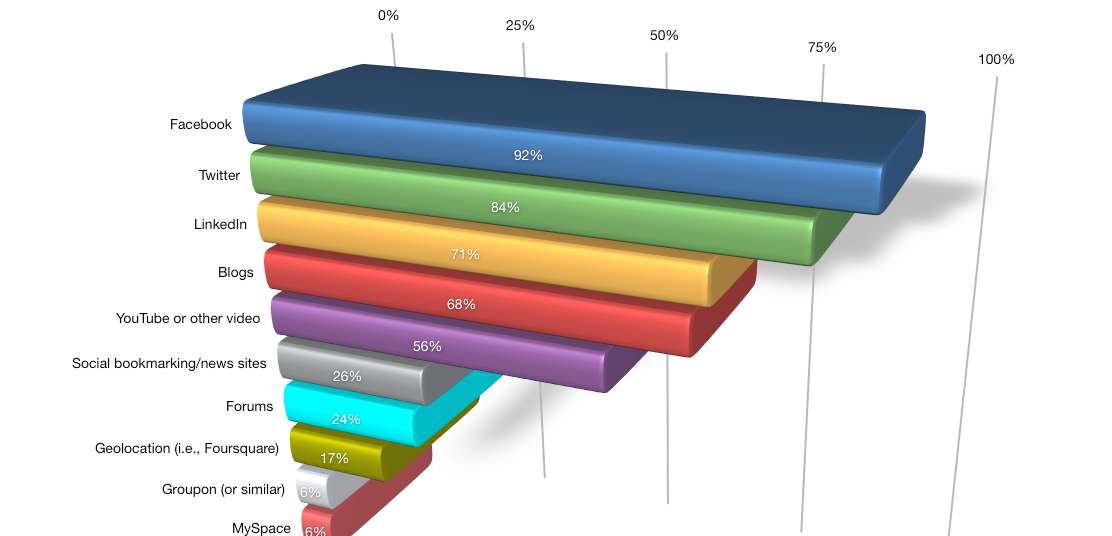A Simple Way to Score Your #SocialMedia Efforts (even if you’re new!)
So I’ve been bombarded with stacks of degree assignments to mark in the past week and strange enough, the painful process of marking actually made me realize something that happens to be relevant to monitoring social media efforts. I can’t speak for other universities but for mine, we follow what we call a marking scheme or a marking grid which outlines the criteria in which the marks are allocated for e.g. Research and Analysis (20%), Flow of Thoughts (10%), Formatting (5%) and etc.
What Does Marking Have Got to Do with Social Media Monitoring?
Interestingly, quite a fair bit. Monitoring has always been a tedious process on social media and many individuals and companies are struggling to monitor the performance of their presence across social media networks. There are many great articles (like these) written on different measurements such as Conversion Rates, Feedbacks, Inbound Links, Unique Visits, Retweets, Clicks and the likes of it but many of these can still be rather complicated for someone new on social media. Also, how do one put all these together?
Is There Anything Simpler?
With the understanding of different individuals or businesses have different priorities and expectations on social media networks, you may want to consider producing a marking grid by 4 simple steps:
#1: Listing down all the criteria that you deem as important. For example, Number of Retweets and Shares, Comments and Feedbacks, Unique Visits, Number of Fans / Followers, Number of Impressions, Number of @Mentions and etc.
#2: Assigning a score to each of the criteria to a total of 100%. For example, Number of Retweets and Shares (10%), Comments and Feedbacks (30%)… you get the drift :)
#3: Set an end goal to each of the criteria (desirable vs non-desirable). This is so that you know how you’re doing throughout. For example, Number of Retweets and Shares – Desirable (>50 Retweets) vs Non-Desirable (<10 Retweets).
#4: Score yourself on a periodic basis. It’ll be great if you can do it weekly, else every two weeks – I won’t recommend going less than once a month. After all, the whole purpose of this is to track your progress, no?
Why You May Want to Consider This (Self-Created) Method
You may be reading this and have been wondering whether this works or whether it is appropriate for your situation. Should you consider a more professional / advanced tool instead of this method? Now, you may definitely require something more advanced than this method especially if you require more complex analysis and information but it can be a great start for you if you’ve just getting started.
Reason 1: It is built to your expectations. You set your own goals that caters to your own situation and environment. If you think that the number of visits to your site isn’t important (e.g. because you prefer to have a small but closely knit community), then assign the criteria with a lower score.
Reason 2: You do not need any fancy software or applications. Pen and paper will do but if you insist on using one, try Excel or any spreadsheet app, it is more than enough.
Reason 3: It is very straight forward. Also perhaps the easiest way to keep track of your progress. This way, you’ll also know where should you put that extra effort instead of just looking at fancy graphs trying to figure out what’s next.









 The day came when StumbleUpon released
The day came when StumbleUpon released 





 #2: Champion of the Pond
#2: Champion of the Pond This is pretty straight forward. Just like how your business is looking for opportunities to be featured on newspaper / magazine columns, you can write guest posts on other people’s blogs! All you need to do is to be on a lookout for opportunities to guest post –
This is pretty straight forward. Just like how your business is looking for opportunities to be featured on newspaper / magazine columns, you can write guest posts on other people’s blogs! All you need to do is to be on a lookout for opportunities to guest post –  Just like guest posting, commenting on other writer’s posts can bring about great exposure to your business. How so? When you leave constructive comments and / or share ideas, you’re actually
Just like guest posting, commenting on other writer’s posts can bring about great exposure to your business. How so? When you leave constructive comments and / or share ideas, you’re actually